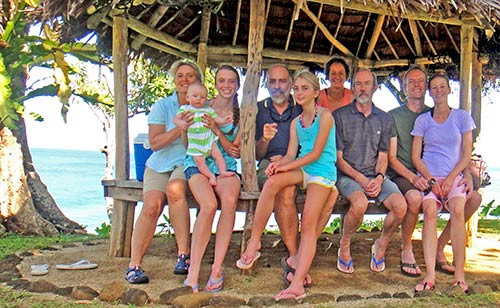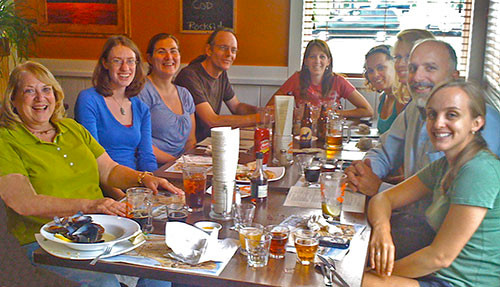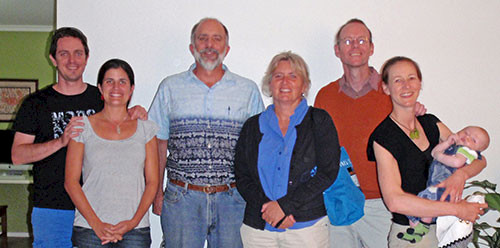Tim Carruthers moves to Samoa
Bill Dennison ·Tim Carruthers has begun a new chapter in his career and life by moving from Maryland to Samoa on June 2011. Tim came with me from the University of Queensland to the University of Maryland Center for Environmental Science (UMCES) in early 2002. We came to UMCES to set up the Integration and Application Network, which was conceived by the UMCES faculty in a 2000 strategic planning document. Tim had joined the Marine Botany group at the University of Queensland in 1999 as a postdoctoral fellow, following an Honours degree and a PhD at the University of Western Australia under the supervision of Professor Di Walker. Tim conducted much of his Honours and PhD research underwater, and even worked for a stint as a dive instructor on a dive boat operating out of Cairns in northern Queensland.

Tim has had a taste of tropical life, as he worked for 11 months at the Smithsonian Tropical Research Institution in Panama, mostly based at the Bocas del Toro field laboratory on the Caribbean side of Panama. His new job is at the Secretariat for the Pacific Regional Environment Programme, based in Apia, Samoa. He has moved to Samoa with his wife Courtney Schupp and their son Colin.
Tim's contribution to the Integration and Application Network (IAN) has been immense. He contributed to every part of IAN, including the symbol libraries, image library, science communication, science integration, peer review publications and science communication products. Tim has led the two most important recent IAN partnerships with Conservation International and the U.S. National Park Service. Tim came up with the original breakthrough with symbol libraries by identifying that Adobe Illustrator allowed users to import the IAN symbols en masse. Adrian Jones and Tracey Saxby followed up with the web based symbol libraries that have become so globally popular, but it was Tim who recognized the importance of piggybacking on existing software.

Tim was the first Science Integrator with IAN and basically defined the job. He became the first IAN Program Manager as well, displaying leadership in forming partnerships and directing Science Integrators and Science Communicators. At different times, Tim has contributed in virtually every aspect of IAN.
Another contribution that Tim made was the formation and development of the Seagrass Trajectories working group, as part of the National Center for Ecological Analysis and Synthesis. Tim was a key member of the group, helping the various subgroups with synthesis, science communication and writing. Tim also initiated various science communication products that developed from the scientific synthesis.

Tim made what I consider major science integration breakthroughs. These examples include a) seagrass ecosystem synthesis in large sections of the Australian coastline, b) tropical ecosystem habitat assessments, c) global seagrass trajectory analyses, and d) habitat assessment frameworks for urban to remote national parks. Each of these incorporated broad conceptual thinking, rigorous statistical analyses of large data sets and sharp, crisp writing to synthesize the state of knowledge.
One of the first and longest lasting partnerships that IAN has developed is with the Maryland Coastal Bays Program and Maryland Department of Natural Resources. Very early in the development of the partnership was the production of a summary booklet, entitled Maryland Coastal Bays 2004. We had several meetings with Tim in attendance and in one meeting, Tim was not in attendance. Someone asked "Where's Ian?" Since Jane Thomas, IAN Science Communicator, and I were there, we answered "We're here!" After some confusion on both sides, we learned that IAN was being confused with Tim, which is appropriate, as Tim was, indeed, very much the heart of IAN. As IAN continues to undergo changes and evolve, and as Tim's career also changes and evolves, one of his legacies is the formation and development of the Integration and Application Network.

About the author
Bill Dennison

Dr. Bill Dennison is a Professor of Marine Science and Vice President for Science Application at the University of Maryland Center for Environmental Science.

